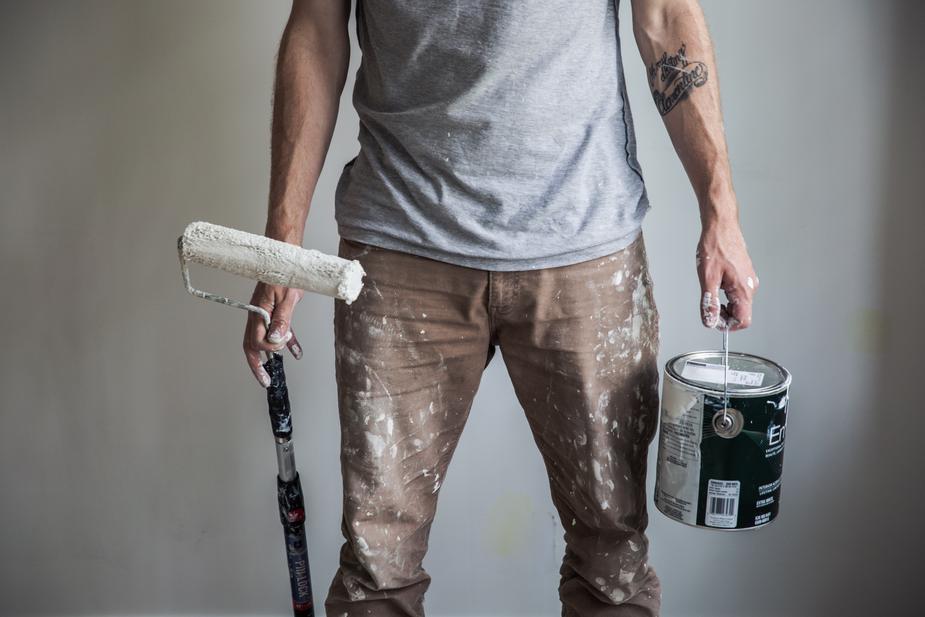(Photo by Matthew Henry from Burst)
Homes built prior to the 1970s may contain lead paint in either the interior or exterior. So if you live in an older home in Springfield or even nearby Burke, odds are that you may be dealing with a lead-based paint job that you may need to have professionally removed.
This is one benefit to newer construction, though it shouldn’t preclude you from considering purchasing an older home.
How is Lead Paint Harmful?
It is possible for older lead-based paints to flake and chip, releasing lead paint dust in the air in your home. This is toxic and dangerous! And it can happen due to normal wear and tear — or due to renovations — and can lead to exposure for you and your family.
Flaking of exterior lead paint into the soil around your house is another source of lead exposure to your family. And keep in mind that lead paint wasn’t only used on interior and exterior walls and trim, but it may be on any antique furniture or frames in your home as well, so it’s important to be aware of any and all older painted surfaces you have in your home.
Long-term exposure to these sources can cause damage to brains and nervous systems as well as other health complications.
If you live in an older house, routine maintenance can keep the paint intact, which reduces your exposure, but if it is peeling or chipping, then it definitely needs to be removed.
How to Remove Lead Paint
Intact (not chipping or peeling) paint jobs may not necessarily have to be removed at all. They can be painted over and sealed. But if you are at risk of lead exposure, this is not the time to DIY. Peeling lead-based paint does need to be removed, and the EPA does not recommend that you try to remove it yourself.
Even scraping old lead-based paint or removing it with a heat gun can produce dangerous lead dust, chips, and fumes. So you should always hire a certified contractor or professional that follows lead-safe guidelines when doing repairs and renovations to your home.
What are the Virginia Laws?
If the main purpose of the project is to make the house lead-safe, and not just as part of an overall renovation project, then you should use a licensed lead abatement firm.
Virginia law (CVA 54.1, Chapter 5) requires lead contractors and certain individuals to be licensed before conducting activities that disturb lead-based paint. This program is administered by the Virginia Department of Professional and Occupational Regulation (DPOR).
Before this type of project begins, Virginia regulation (16 VAC 25-35-10) requires written notification of any lead project by the contractor or individual to the Department of Labor and Industry (DOLI) on their department form. There is no fee for residential property (16 VAC 25-35-40) and don’t worry if its a rush job — the provision for notifications for less than the required 20 days (emergency) is available (16 VAC 25-35-30).
If the project is part of a more general renovation, it is possible to hire a professional contractor certified under the EPA’s Renovation, Repair, and Painting (RRP) program for safe, effective lead-based paint removal.
Don’t Know If You Have Lead-Based Paint in Your Home?
If you are unsure of whether or not a surface is covered in lead-based paint, luckily, there are ways to take your own samples for testing. You can even pick up a simple test kit at your local hardware store. These should not cost you more than $20 and are generally a simple swab test that will turn color if lead paint is detected.
The EPA keeps a list of accredited laboratories. And Virginia residents should take advantage of a searchable list of accredited laboratories located in the state that the Virginia Division of Consolidated Laboratory Services maintains.
The bottom line is that if you have or are considering purchasing an older home, you’ll want to be aware of the possibility of lead-based paint, but it isn’t something that can’t be handled with the help of a professional.



Leave a Reply